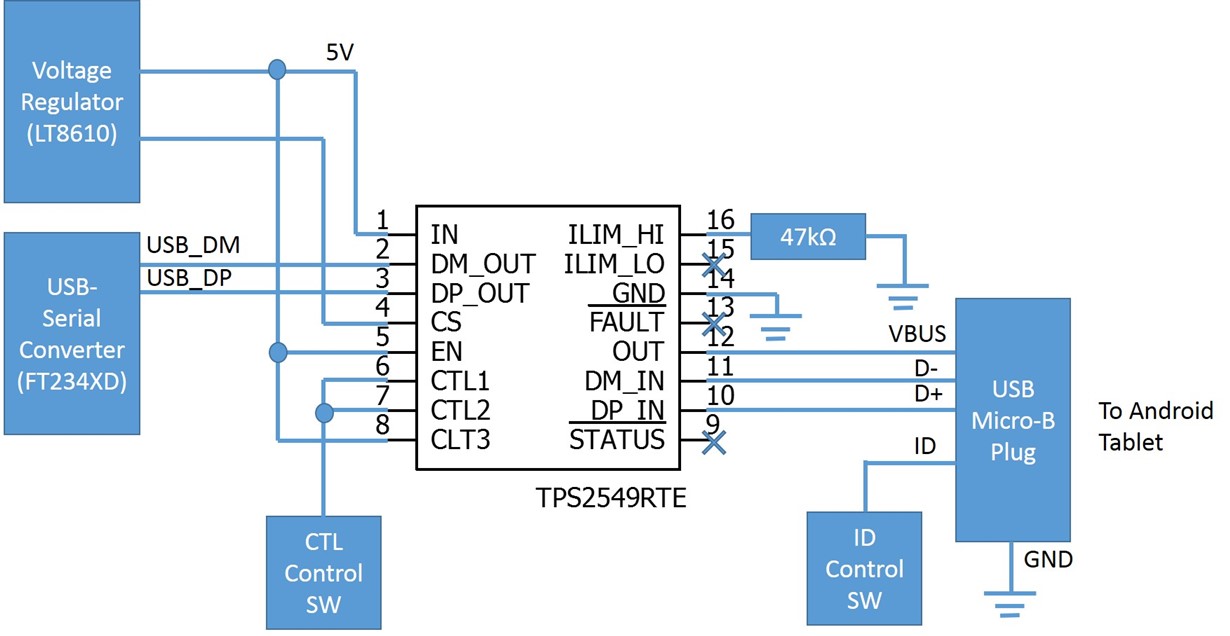Hello.
There is a system that uses TPS 2549 in the project currently in charge.
I verified the designed completed board, but this IC will behave unexpectedly.
The purpose of use and the system configuration diagram of this IC are shown below, so please tell me which part is the problem.
·Purpose
1) This system communicates while charging the Android tablet. However, the tablet side functions as an OTG host device.
2) TPS 2549 complies with BC specification. I also decided that TPS 2549 also corresponds to the ACA (accessory charge adapter) specified in the BC specification.
It is intended to communicate the tablet as a host device using ACA and let the tablet supply 5 V / 1A of electric power.
· Diagram
1) IN / OUT of the 5V line and current limit were functioning normally.
2) Only CTL 1 and CTL 2 can be switched to HIGH / LOW for CTL control SW.
Since these are connected by a circuit, only (CTL 1, CTL 2) = (HIGH, HIGH) or (LOW, LOW) can be selected.
3) According to the OTG standard, the ID control SW can select whether to short the USB ID terminal to GND or 124 kΩ to ACA detection mode.
4) DM_OUT and DP_OUT are connected to FT 234 XD of FTDI.
We are planning to communicate with each other on a device connected downstream of the Android tablet and FT 234 XD.
· Problems and questions
1) The above 4) can not be done. Specifically, when this system is turned on, the voltage regulator is activated and 5 V 1A is supplied to the tablet, but communication is not established.
Is there a problem with USB detection?
2) Does TPS 2549 support OTG? If so, what is the correct behavior?
3) Because we are developing for the first time using USB, we do not fully understand the USB specification.
Please tell me the contents of the USB specification if there is a problem.
Thanks.


